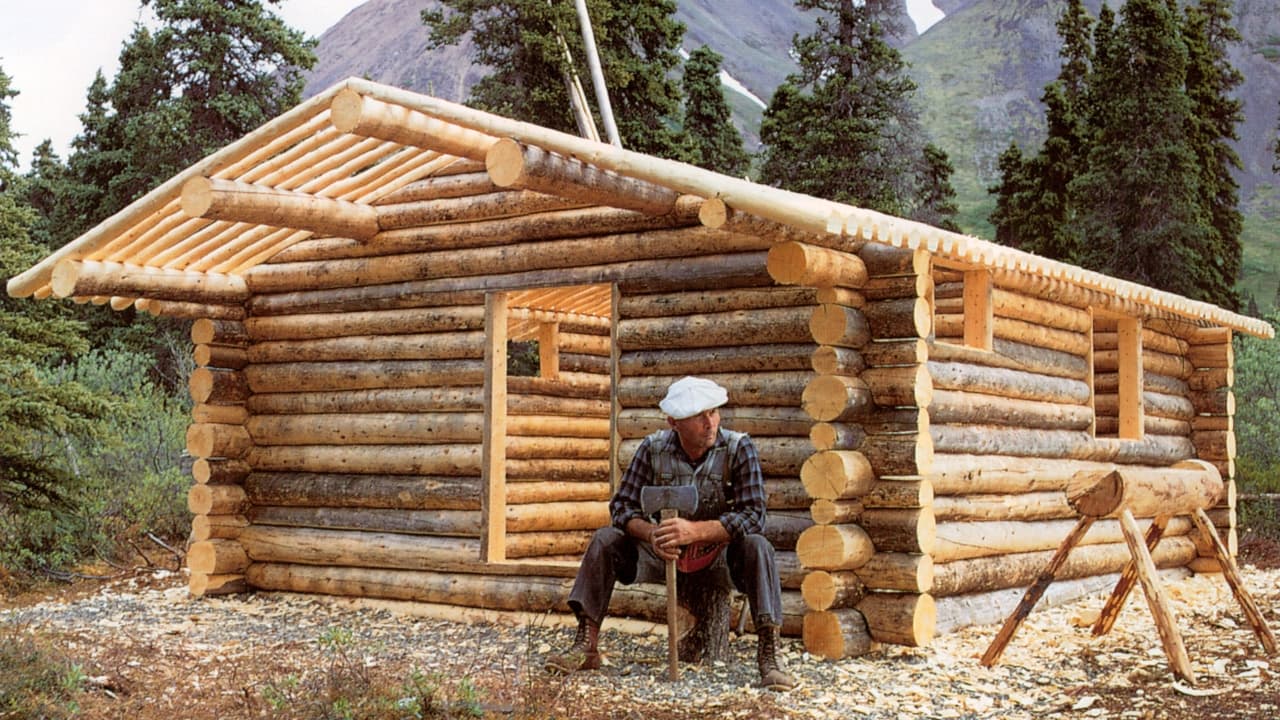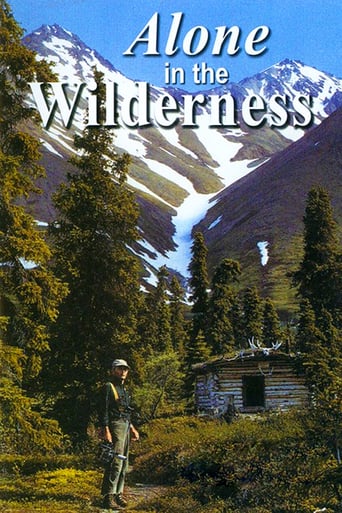Greenes
Please don't spend money on this.
ReaderKenka
Let's be realistic.
Sameer Callahan
It really made me laugh, but for some moments I was tearing up because I could relate so much.
Derry Herrera
Not sure how, but this is easily one of the best movies all summer. Multiple levels of funny, never takes itself seriously, super colorful, and creative.
romanorum1
In July 1967 Iowan Richard ("Dick) Proenneke cut down sturdy log poles from a stand of white spruce in a remote southern Alaskan valley known as Twin Lakes (Now in Lake Clark National Park). He moved them 300 yards and left them to dry. On 21 May 1968, he returned determined to carve out a new and solitary life for himself at age 51. He brought along a tripod-mounted camera to record his experiences. The result is a treasure on film.Dick had made arrangements to utilize a friend's unused cabin nearby until his own was completed. From the spruce log poles, Dick fashioned sturdy handles for the hand tools that were imperative to his survival. It had been so much easier to transport the tools without the extra weight of their handles. Selecting a twenty foot square area for his proposed log cabin site (the exterior part of the cabin was planned at 15' by 11') with the front door facing northwest, Dick spread out gravel (taken from the lake bed) several inches thick. The planned bay window would thus overlook the nearby lake from the southwest. Dick then began the task of chiseling out notches on each log so that he could carefully fit them together to form the cabin walls. In June 1968, his friend, Babe Ellsworth, flew in needed supplies with his seaplane. Dick then proceeded to plant 15 hills of potatoes plus onions, peas, carrots, beets, and rutabaga (turnips). With the cabin walls completed, Dick trimmed the log ends and constructed a sawhorse work bench. He proceeded to fashion a window frame and sill. Oakum was applied between wall logs for tight seals. As Dick worked on his roof, the mosquitoes came out in force. Using his ax and draw knife with skill, Dick prepared wood hinges for his door. With his leftover log poles, Dick was skilled enough to construct his own furniture. While construction took up most of his time, Dick took a stretch here and there to explore the surrounding countryside. He observed many animal types, like beaver, moose, bear, wolves, loons, and magpies. Dick expressed his compassion for animals when he discovered a defenseless bull caribou beleaguered by flying insects in an area with no blowing breeze. The caribou appeared helpless. Dick scared away the caribou from the annoying bugs. Before applying peat moss on his roof, Dick used tar-paper and polyethylene as sealers. He felt almost remorseful that they are not true wilderness materials, but rationalized correctly that they are very effective for keeping out bad weather. When he constructed an outhouse, he even chiseled out a crescent for the door. Dick made by hand his tin storage containers for his cabin kitchen and outside storage area below ground. With extra wood he prepared a large serving spoon. He especially relished one of his meals: fried fish, potatoes, and onions. On 31 July he noted, "I will go up high today." In the high country, the camera in use is not a tripod. But one slip and it would be curtains for the survivalist. In fact, one realizes that Dick had to stay healthy and not risk any type of injury. Being alone, it could have been fatal. Now the frost began to kick in. On 6 September it was time to begin the fireplace (and chimney). Dick had already gathered stone that was representative of the entire area. The task of pacing and mortaring stone took two weeks to complete. In late September there were four inches of snow on the ground; the temperature read 23 degrees Fahrenheit. On the last day of sheep season, Dick brought down a ram and made the 100-pound pelt for his smokehouse. November brought the beginning of lake and river freeze-ups. Dick had to shovel constantly to keep open his path to the lake and water supply. On 31 December 1968 the temperature read minus 33 degrees. On 2 January 1969 it was minus 45 degrees with 28 inches of thick ice. On 9 January Babe flew in more precious supplies: beans, sugar, and dried apples. Dick even received a belated Christmas present: two warm pairs of knitted socks. On 21 February it was 26 degrees with 27 inches of snow on the ground. Dick commented that a wolverine frolicking in the snow belied his dreadful reputation. By late March the snow was finally on the wane. Dick made a large wooden bowl from a spruce burl. In April the caribou became abundantly visible again. Dick had planned many more projects, like his highly-perched food cache. The film ends before an hour is up. Dick had survived his first full year, and would eventually stay in Alaska for thirty years, leaving in 1998 at age 82. Dick's cabin is now an American National Historic Site. Enough shots were filmed to prepare two more programs; one of these parts was released in 2011. Although additional footage may have been later added to the original, and although another person did some of the filming (Bob Swerer Sr. / Jr.?), the film is fascinating and wholeheartedly recommended. Three facts are learned: living alone in the wilderness requires hard work, skill, and thorough planning!
kthit
Some people display shocking ignorance in some of the reviews when they say that this entire documentary is not genuine, that its just a PBS fundraiser, & that since the camera was moving, the guy was clearly not alone.. Well, I cant help but laugh at their ignorance.. "Richard Proenneke made a film record of his solitary life which was later recut and made into the documentary." Pls think before u ink.. I know some people may find it boring.. But to say that this is a false documentary requires a high level of foolishness.. & To say that this is just a PBS fundraiser.. Well.. A "fundraiser" which took nearly 30 years.. WOW.. completely moronic..
jon_lambert2004
We thought that this was a pretty good movie. We were impressed that he could live 35 years on his own. His craftsmanship was amazing, and he made a lot of very nice things, Like the cabin itself and furniture. He was very resourceful. It was impressive what he was able to do at his age. After his 6 months in bed rest, He was devoted to spending his life improving his physical health. He was a very skilled carpenter. He was a very skilled outdoors man, and knew the terrain and wild life well. He was almost self sufficient in his food too, Hunting and planting a garden to keep himself full. He was a smart man, and knew where the frost lines would be to make a refrigerator to keep his food fresh.
Chelsea Johnson
Alan, Justtin and I found this movie to be slightly boring. We didn't feel that it kept my attention, but it's also not the type of movie that we prefer to watch. A man built his own cabin and lived in the wild for a long time. This movie was very uninteresting to us. I in particular, felt that it was monotonous. Justin felt that the movie "sucked". He also felt that "it was boring and very bland". Alan felt that the movie was "very uninteresting and didn't keep my interest very well." So overall, we felt that the movie was awful. Definitely not the best we've seen. I'd much rather watch a movie that has more action in it instead of a movie about an old man building his own cabin. This movie movie was awful!!! Never watching it again!!!!!!!!!!!

